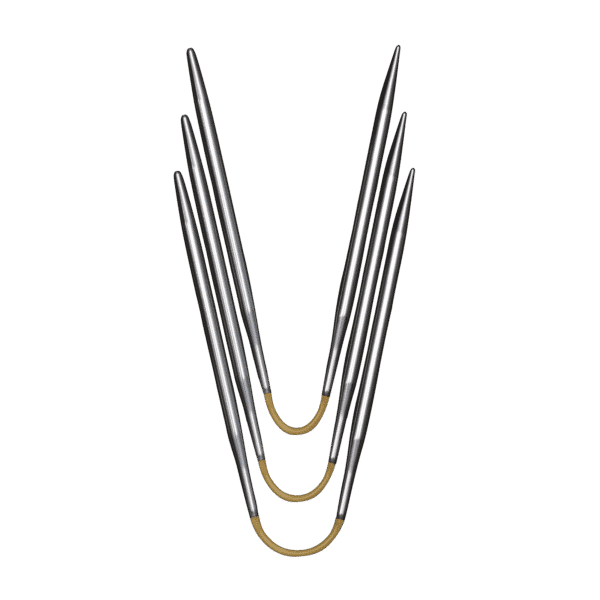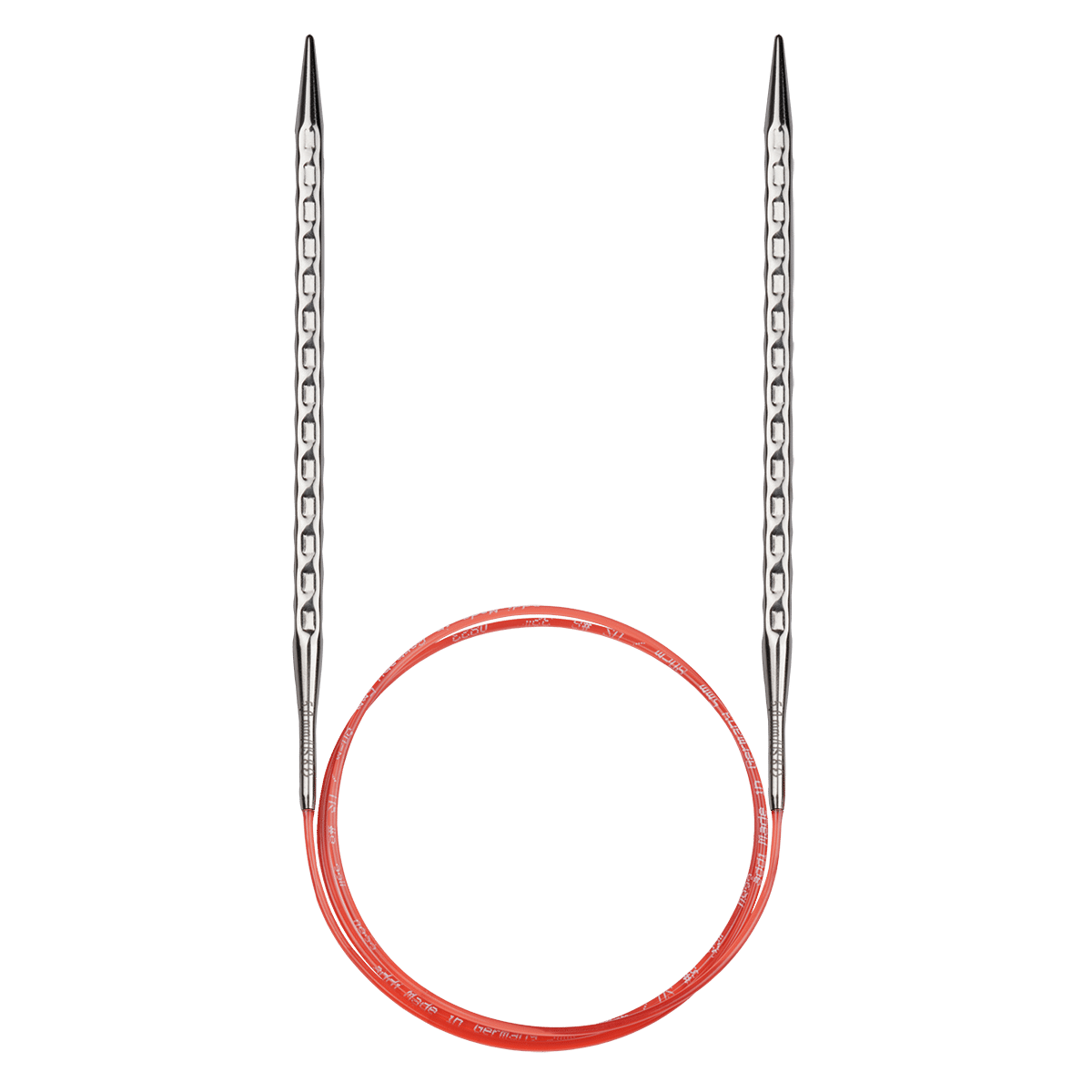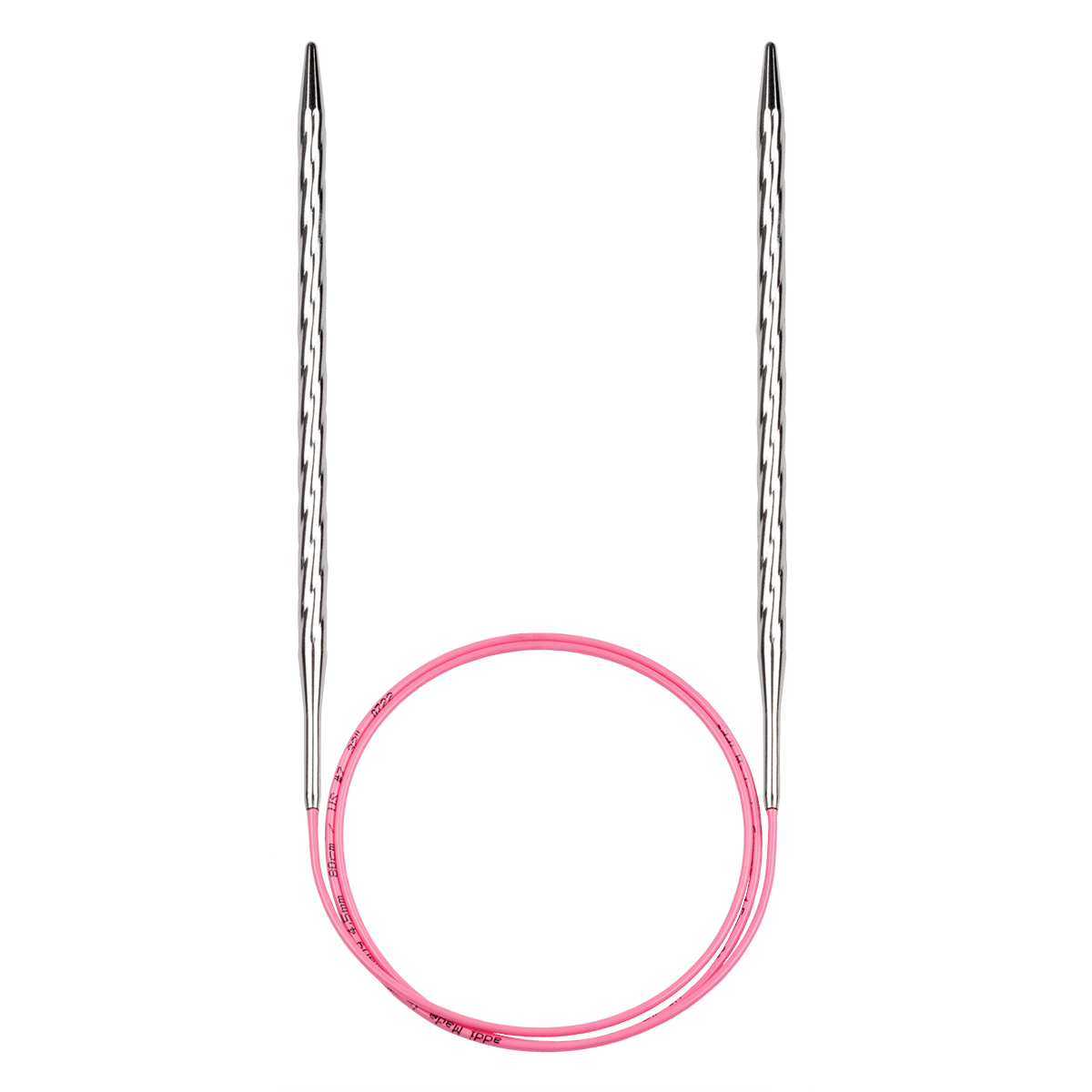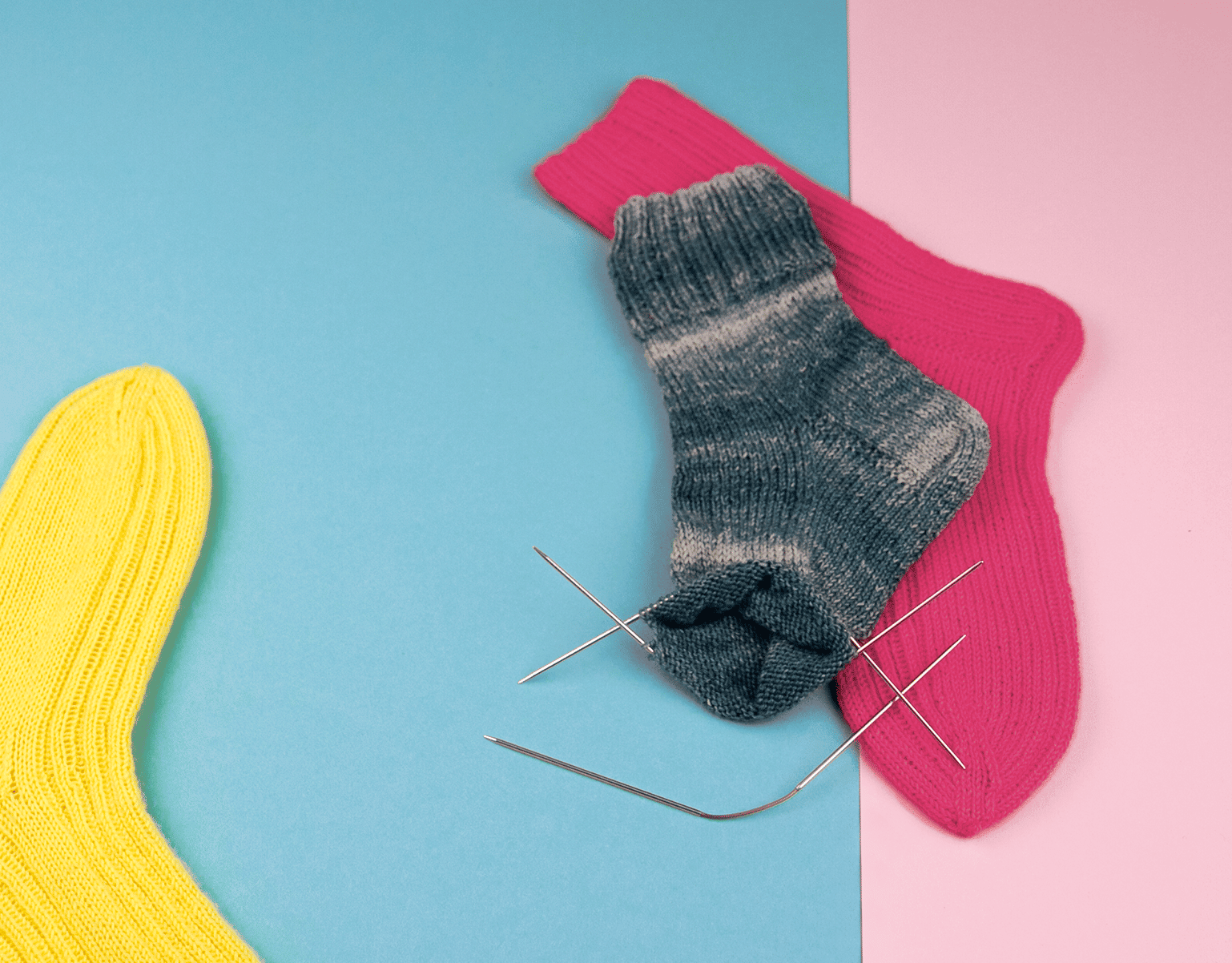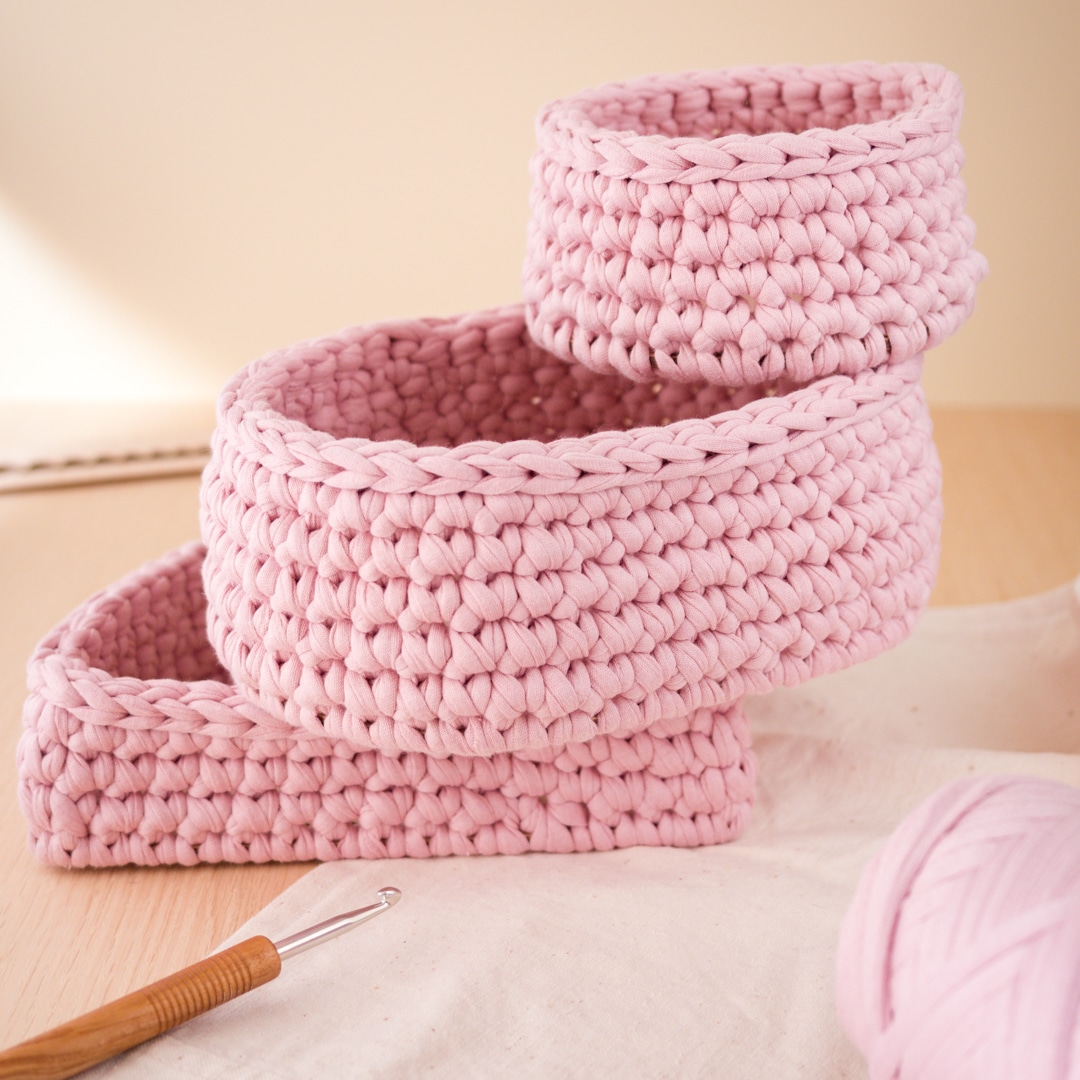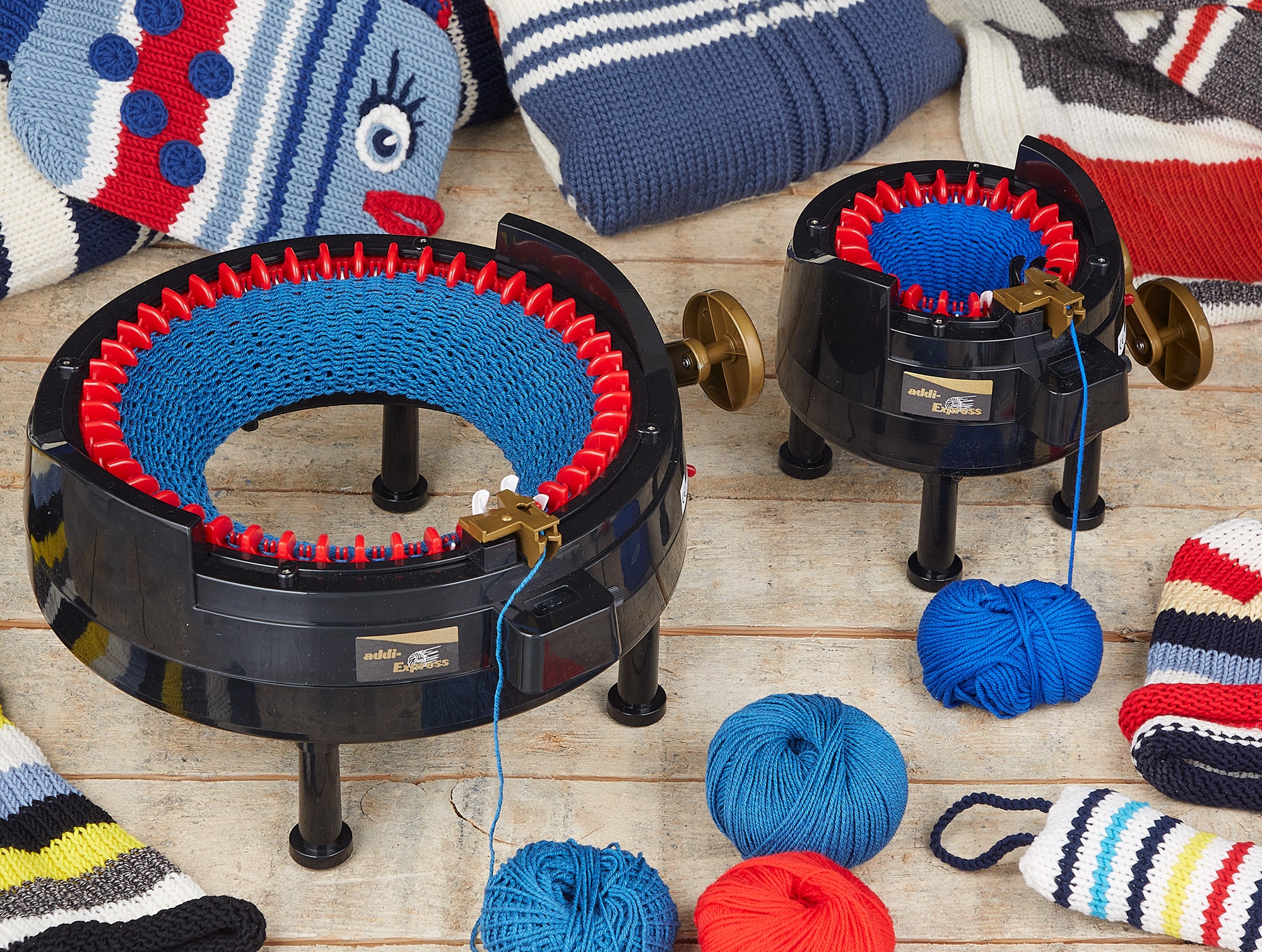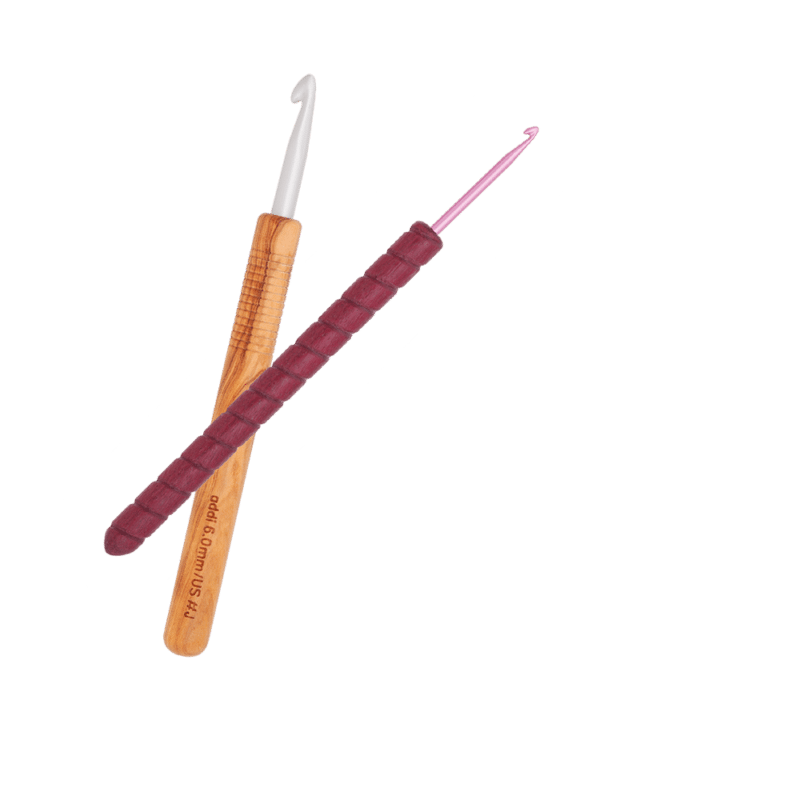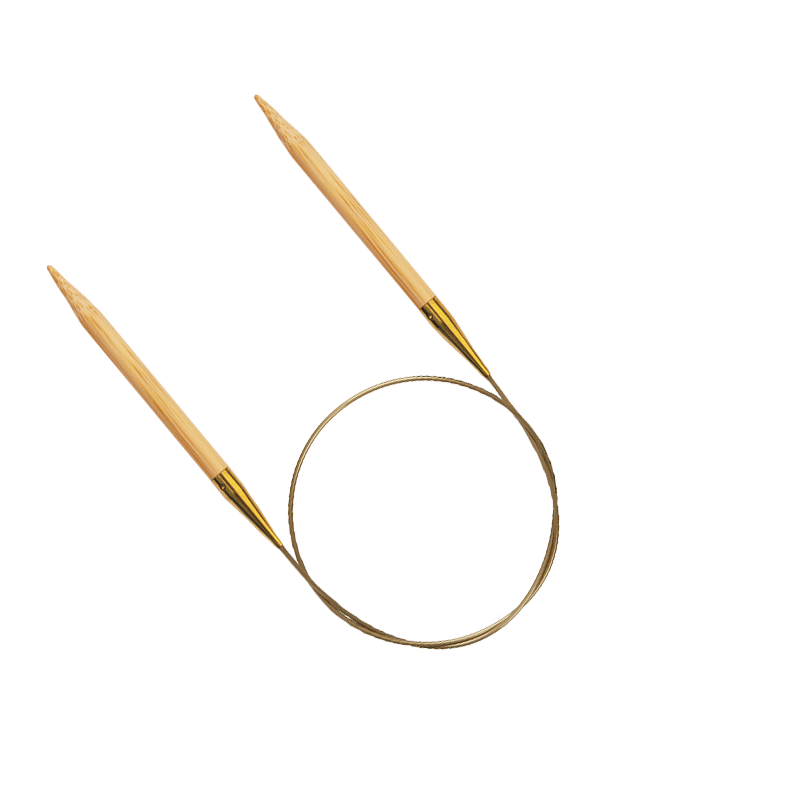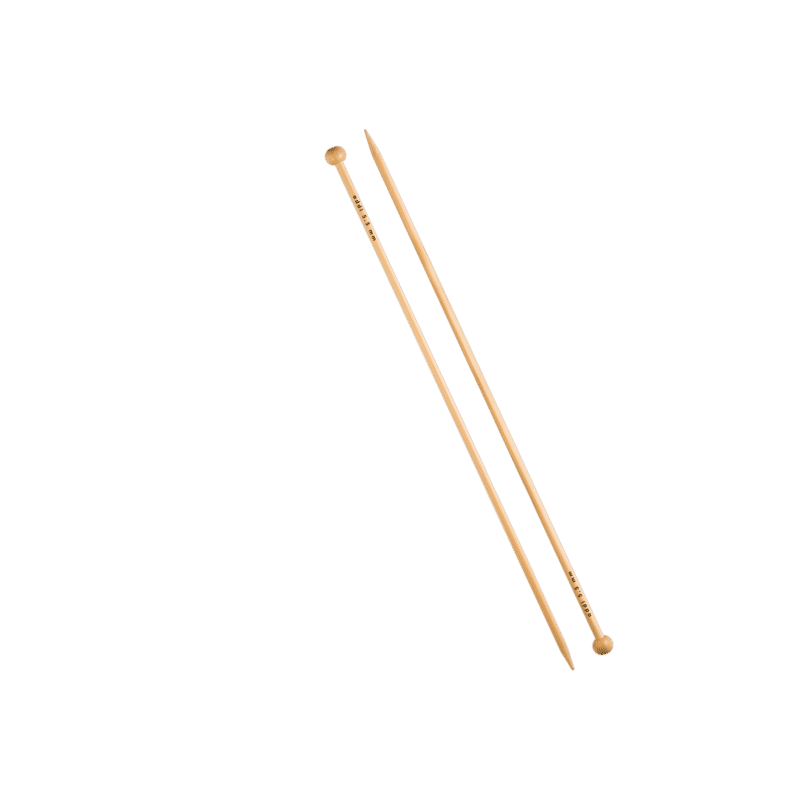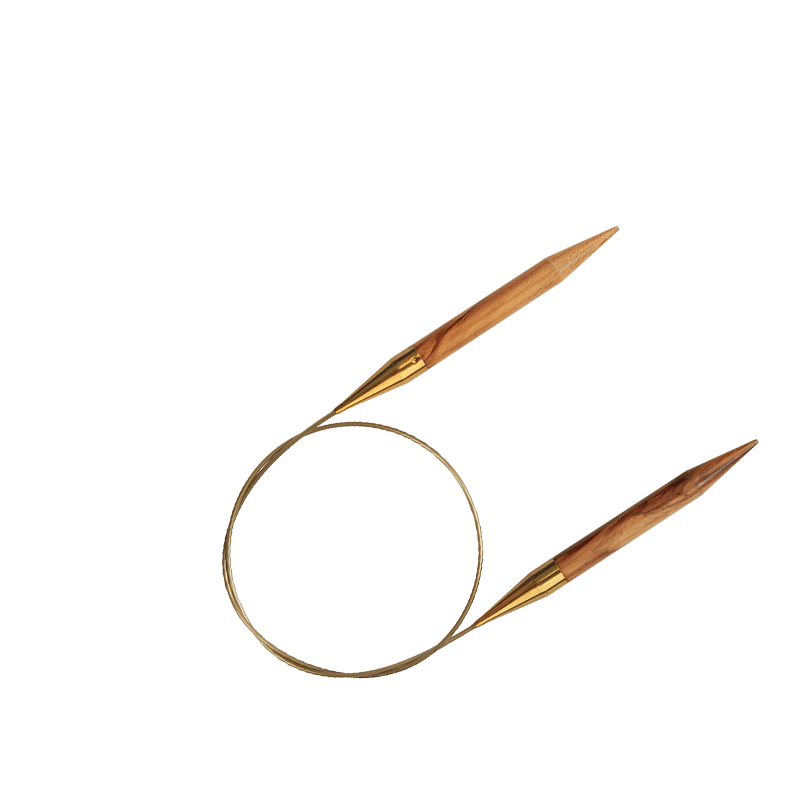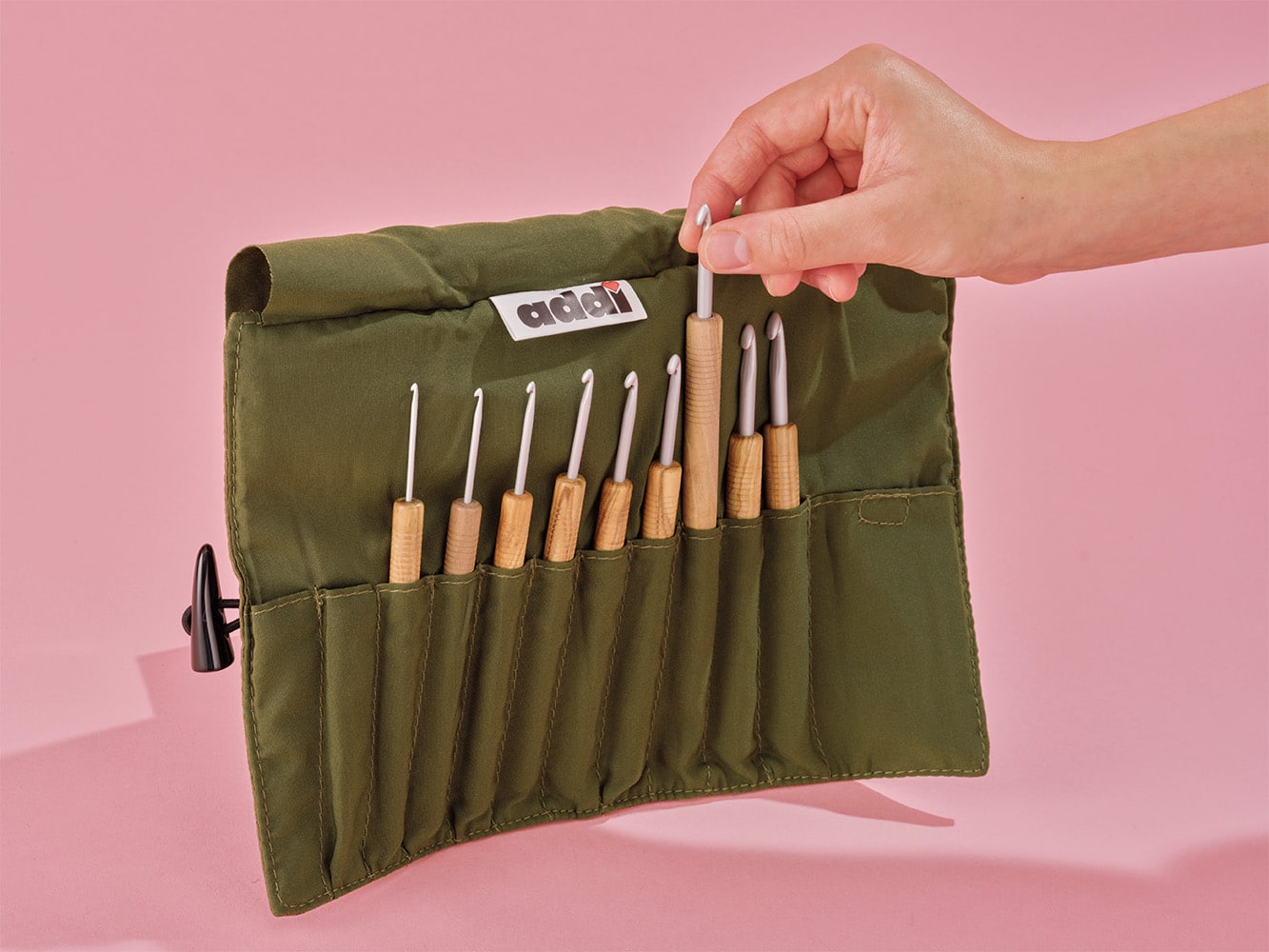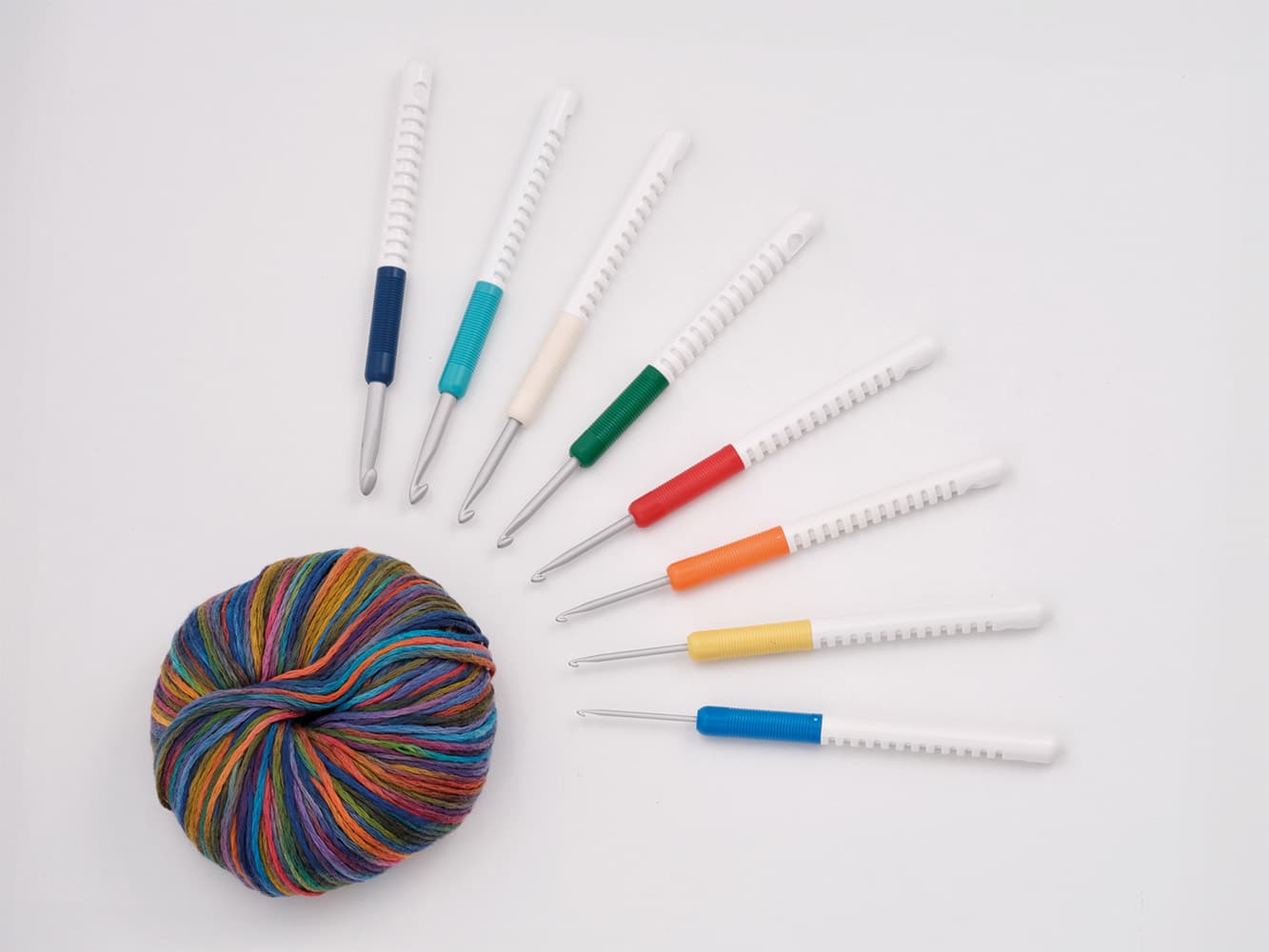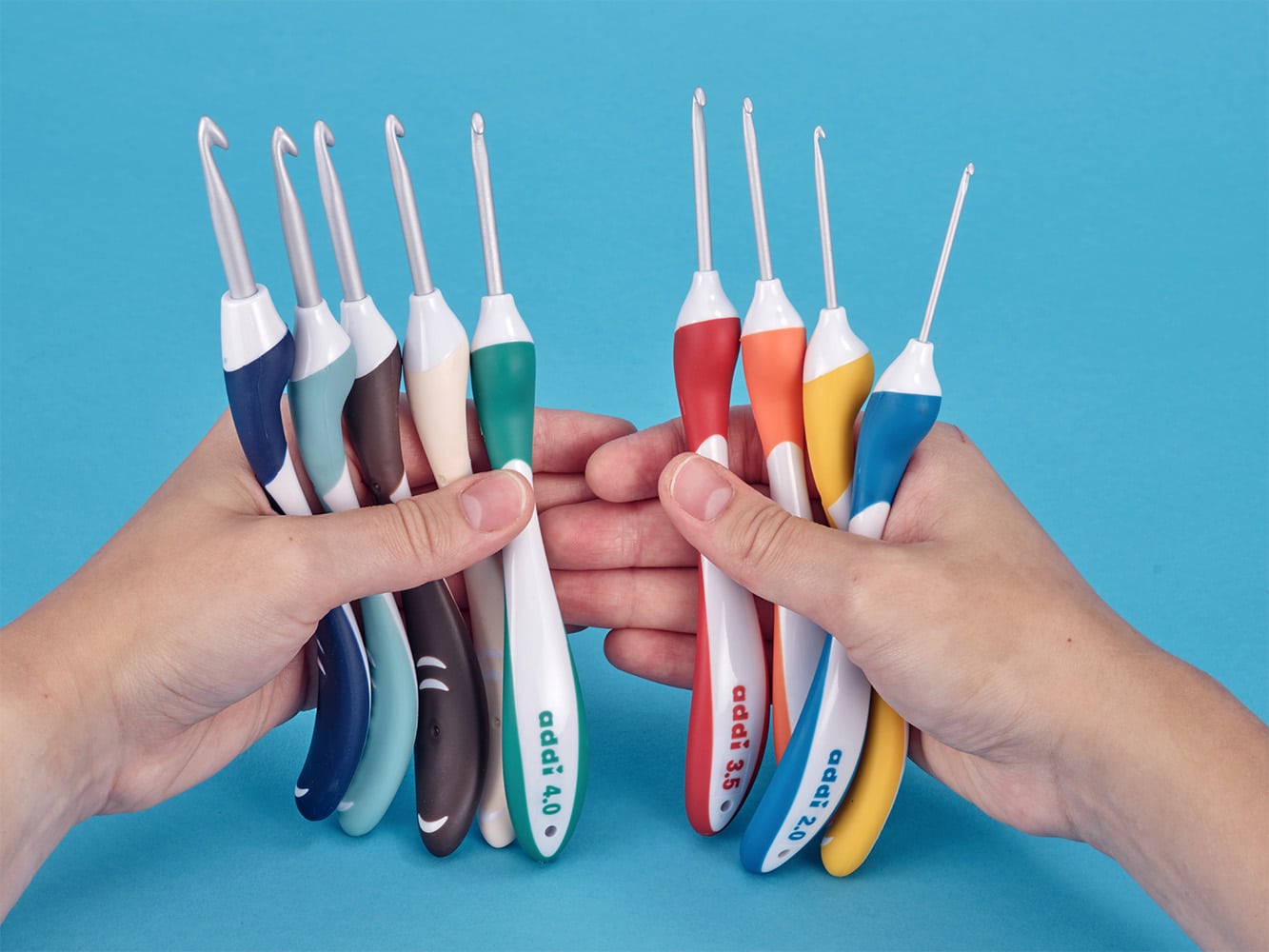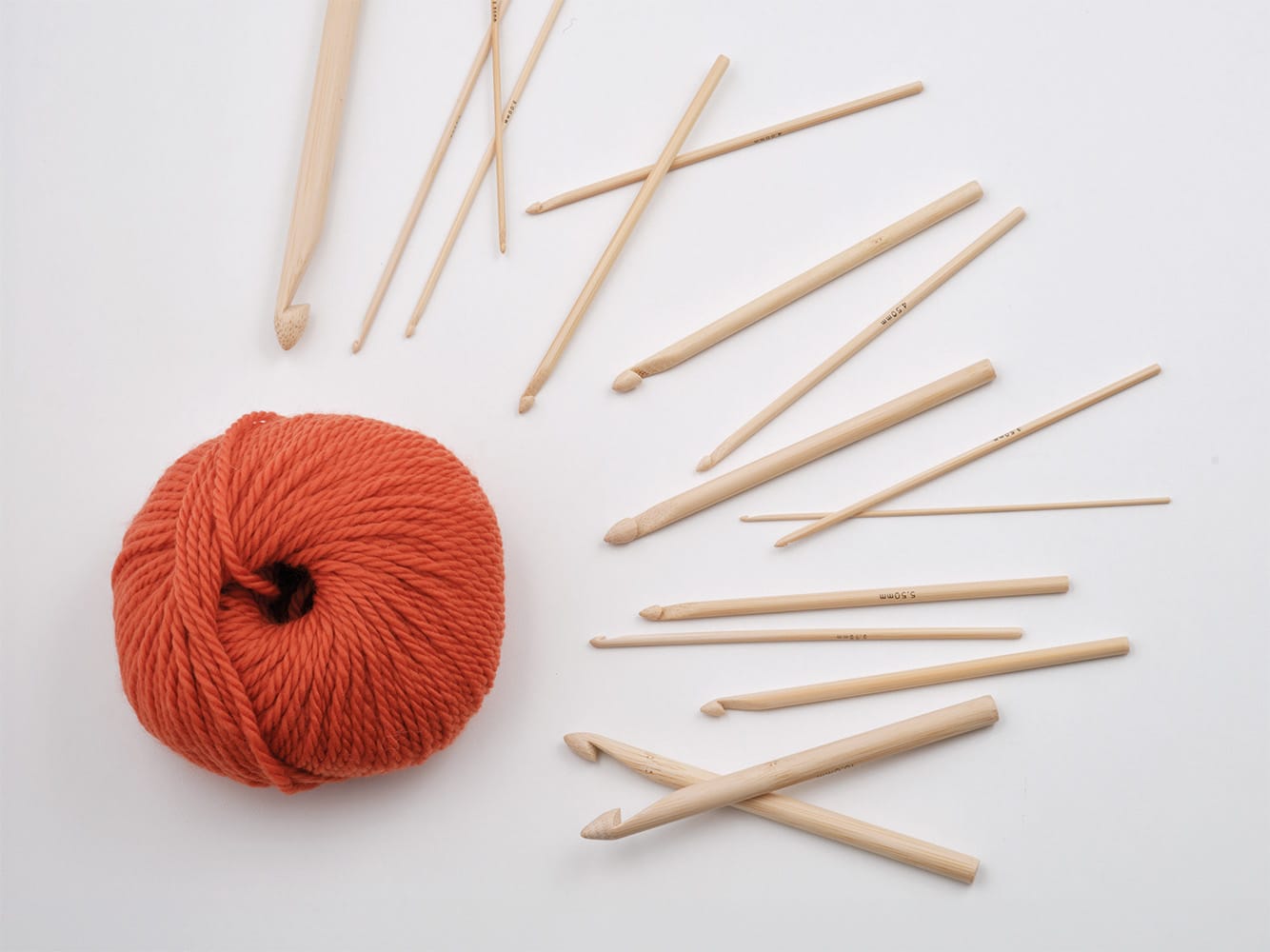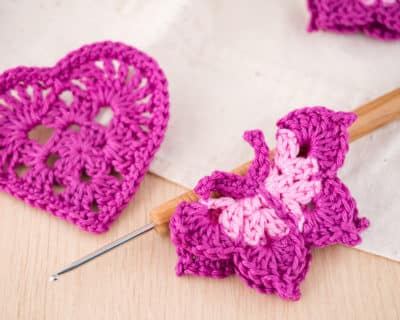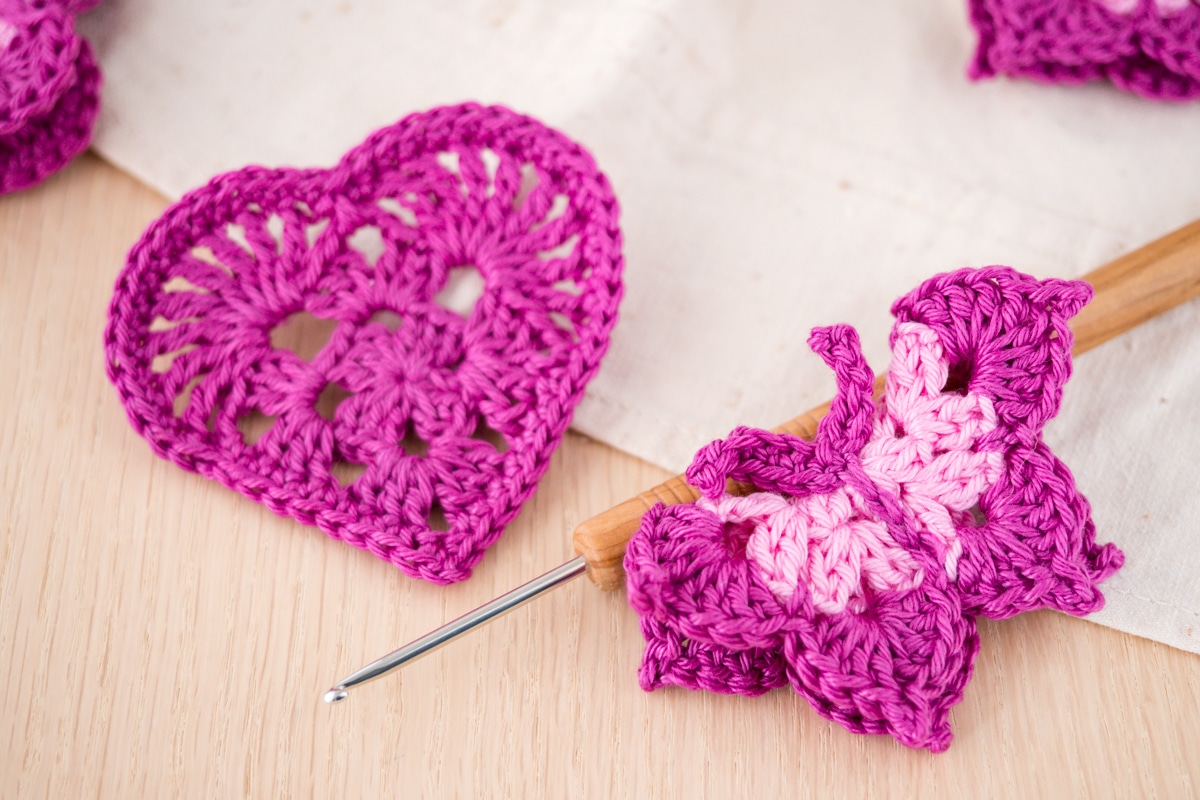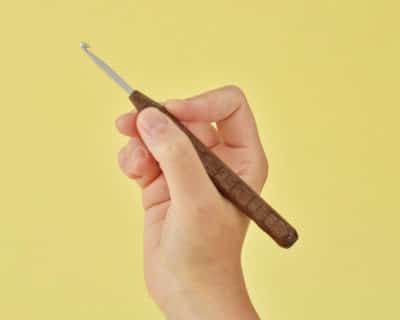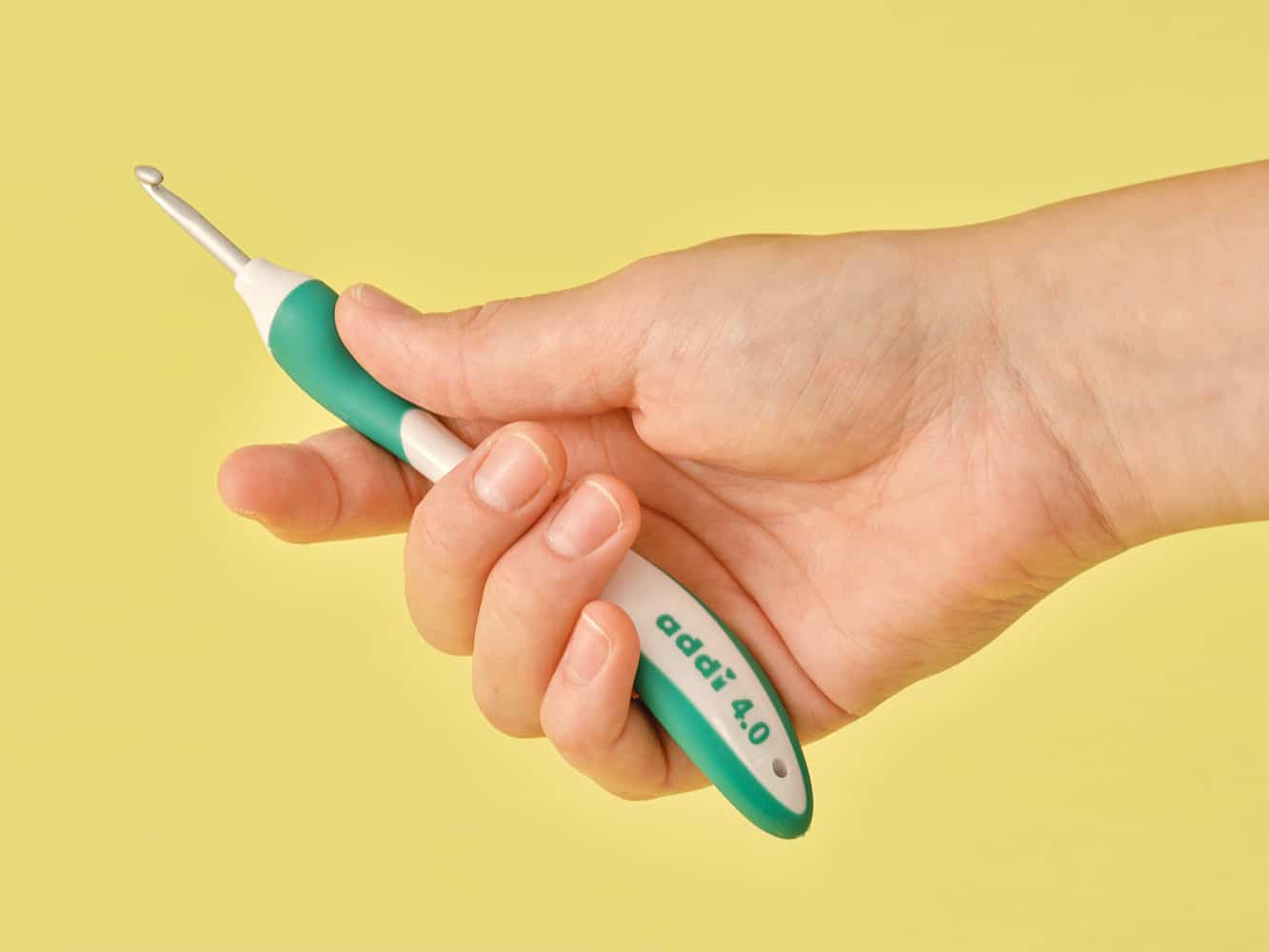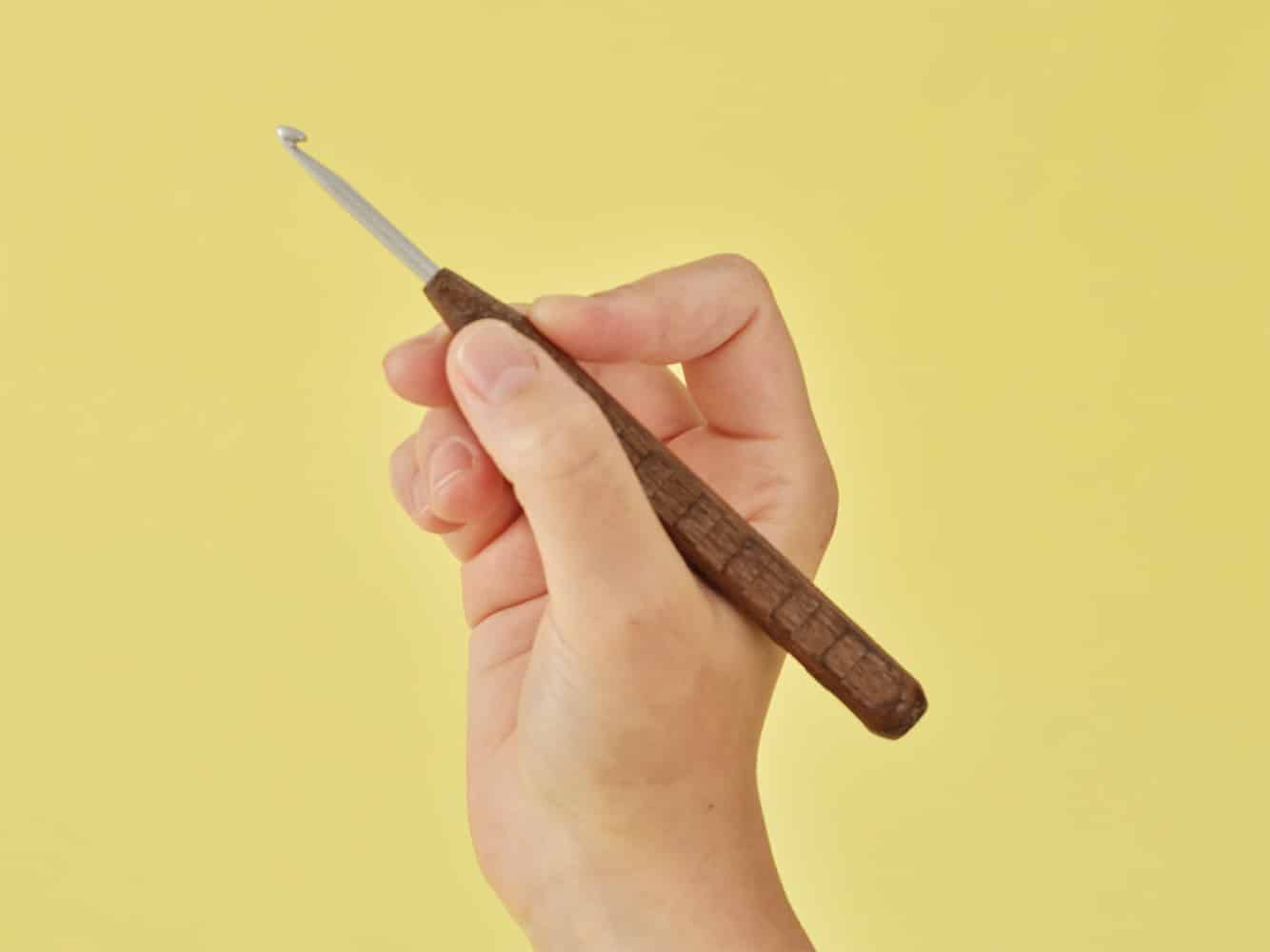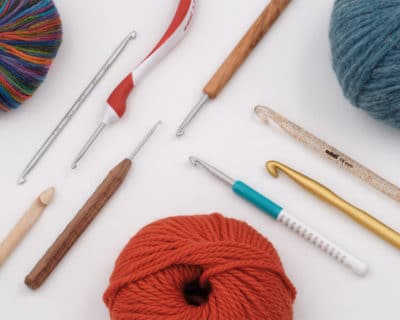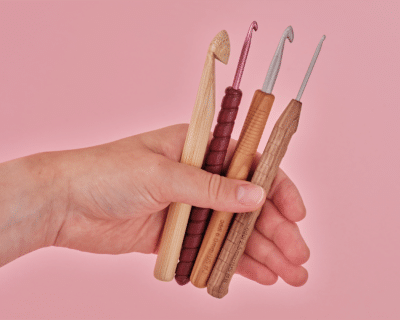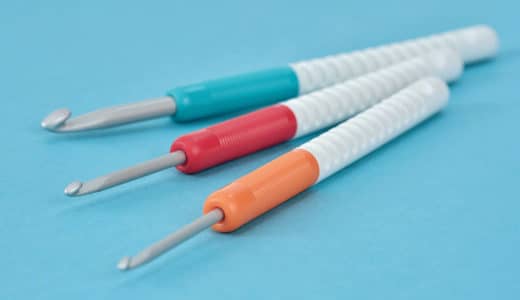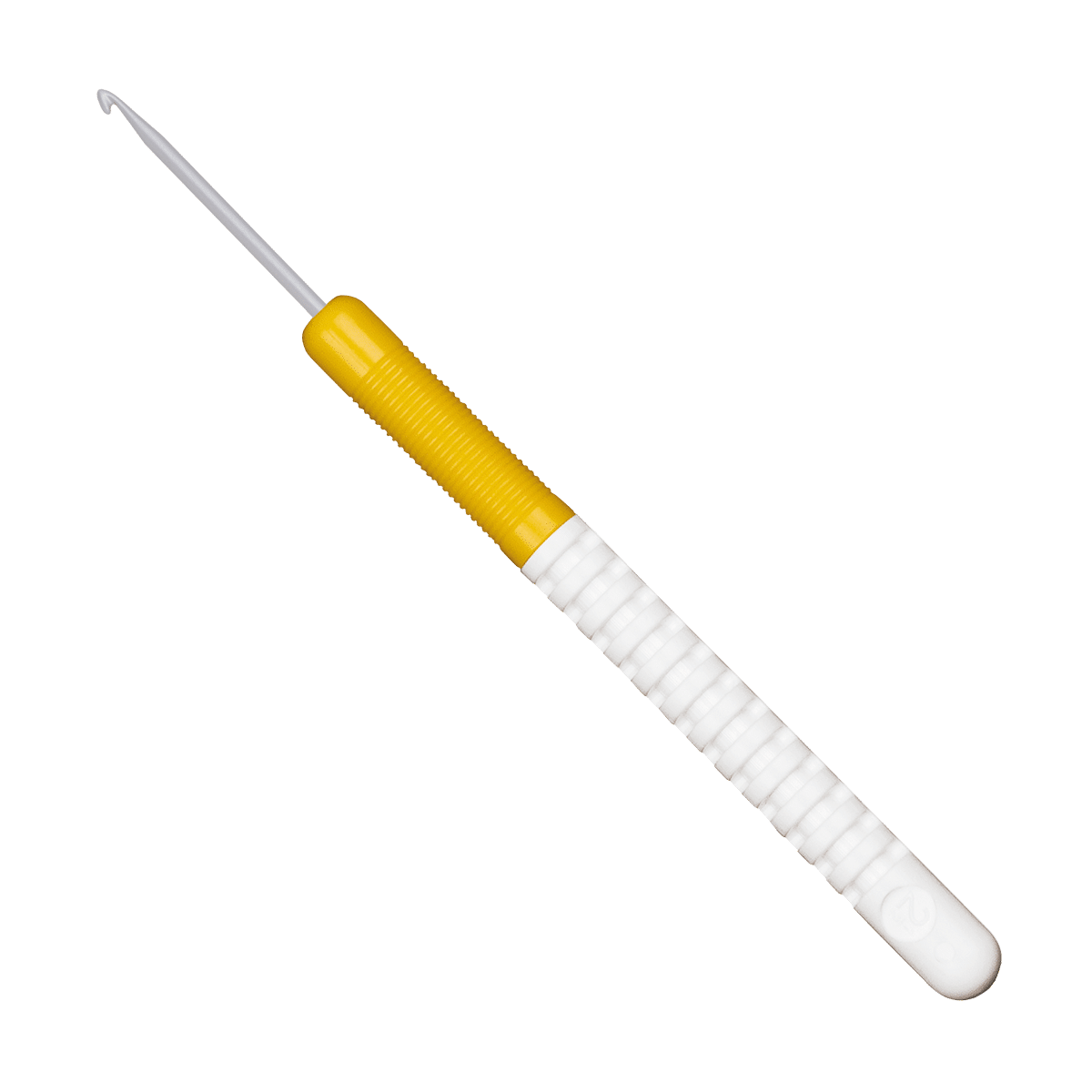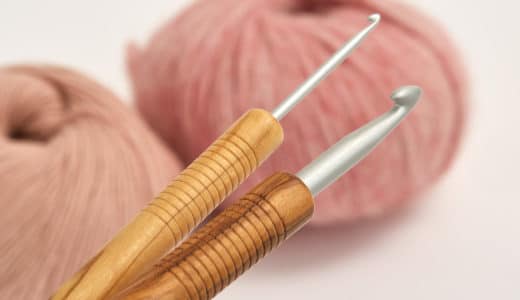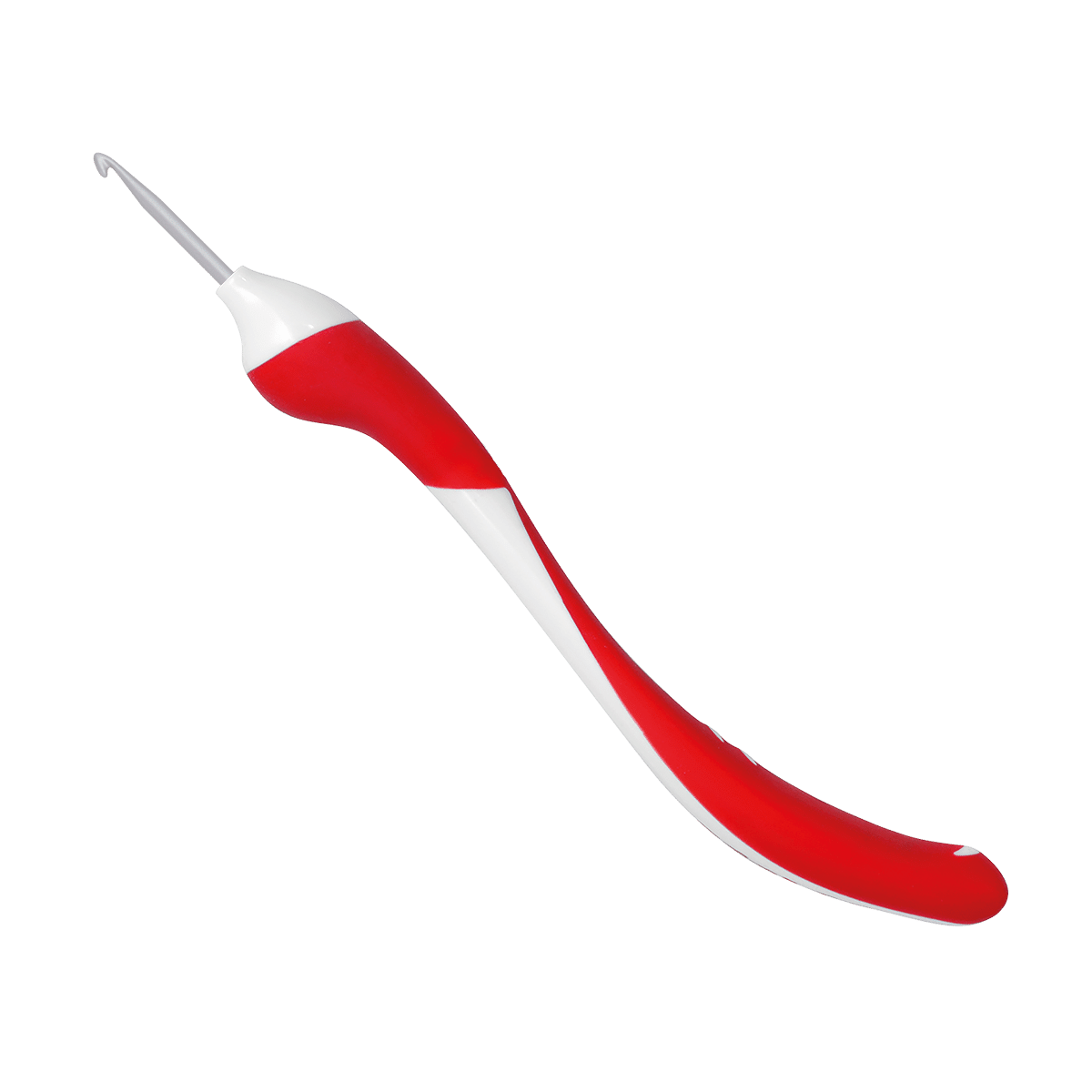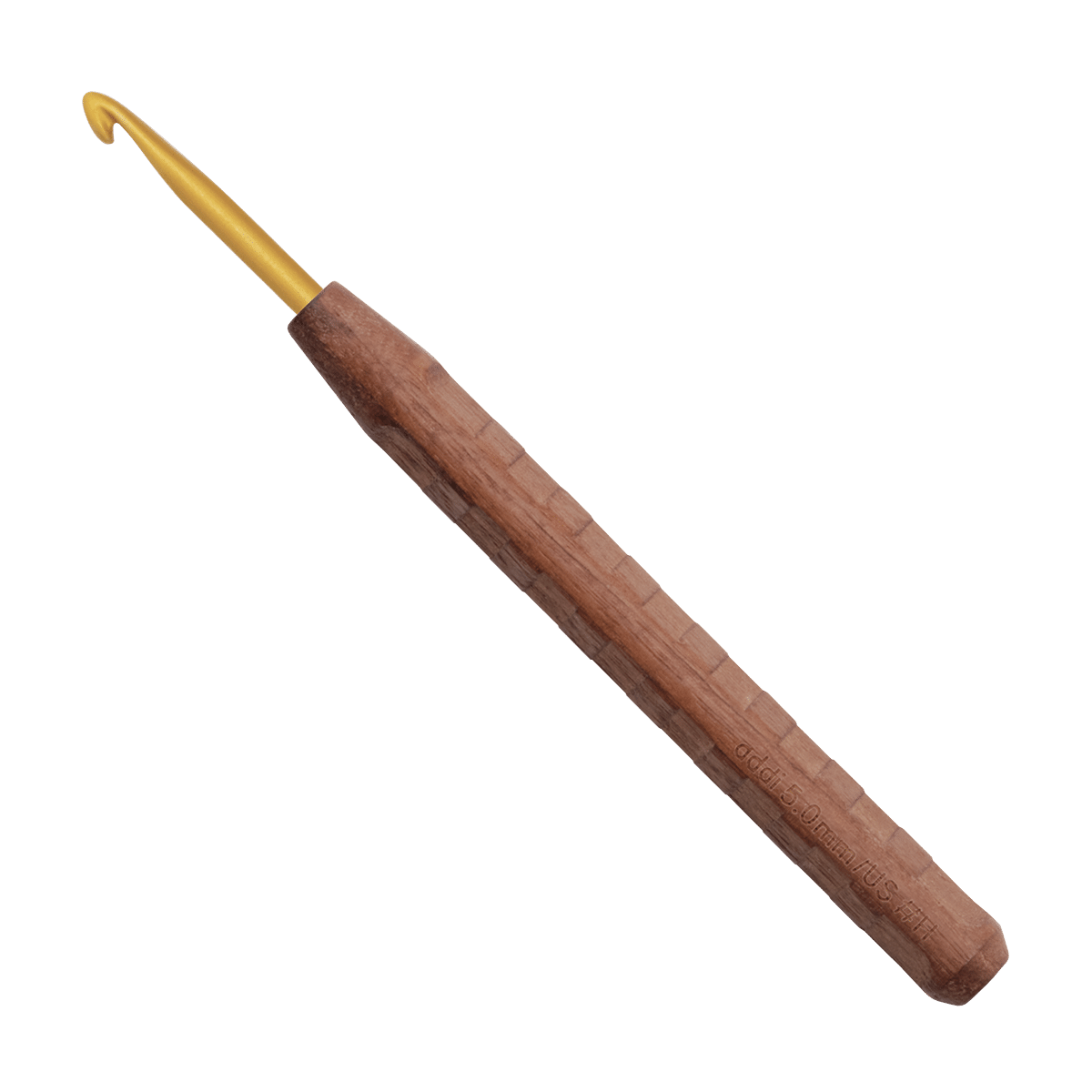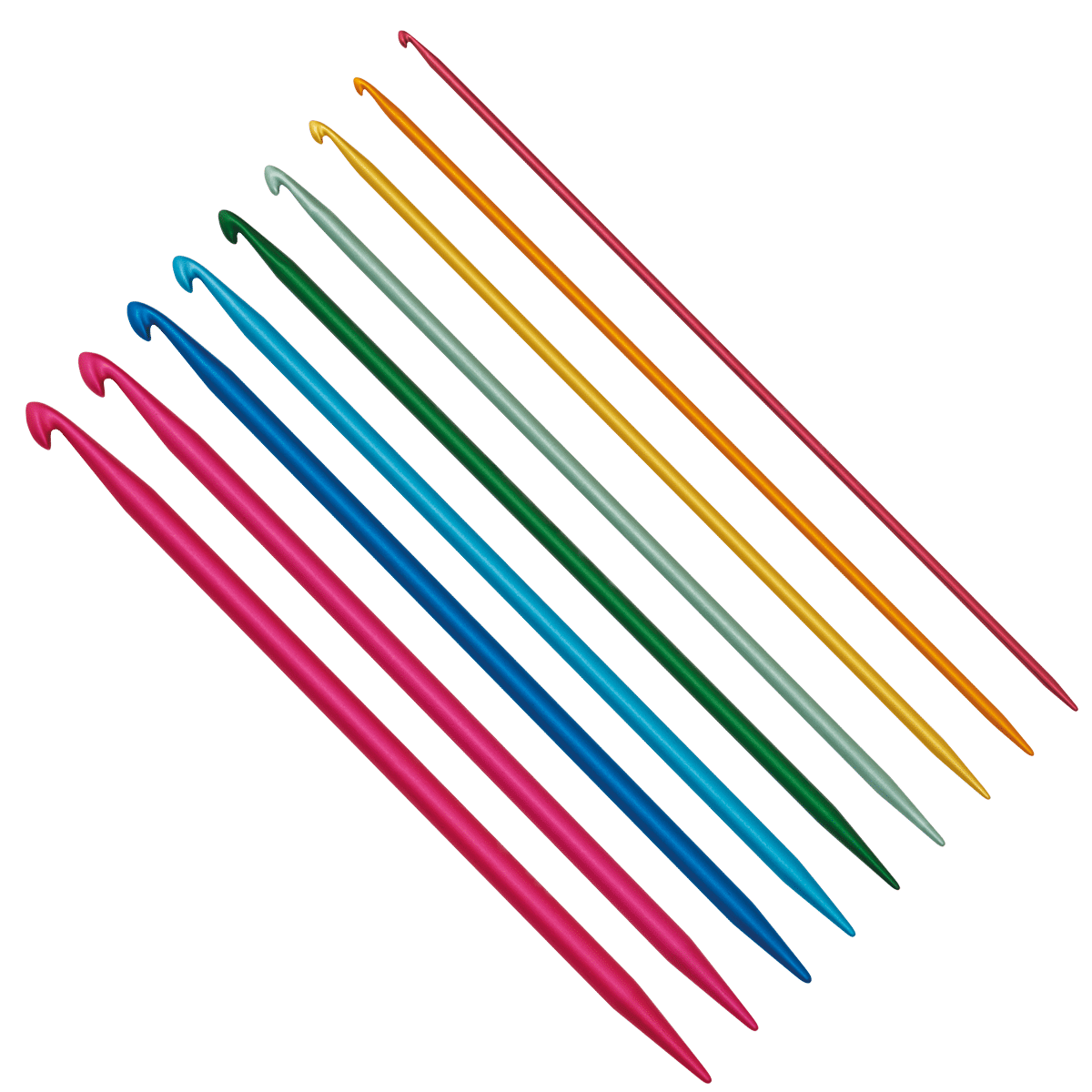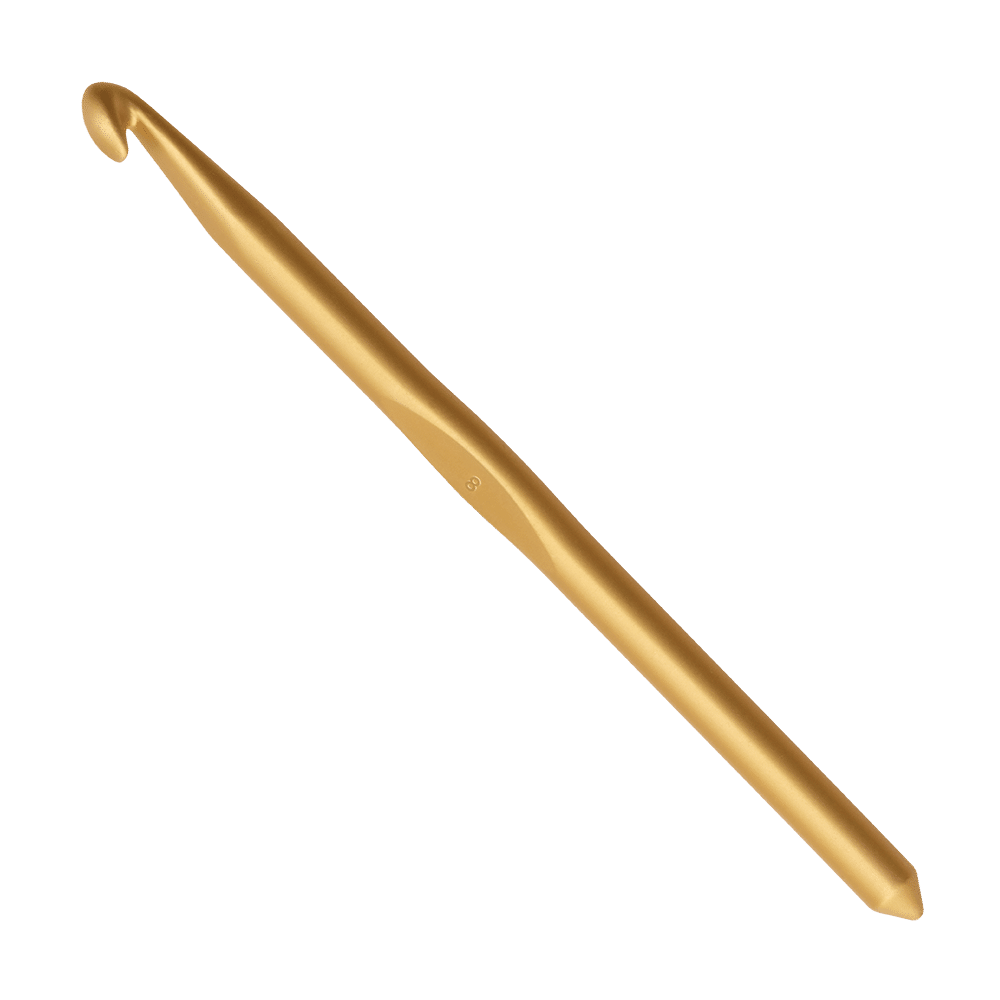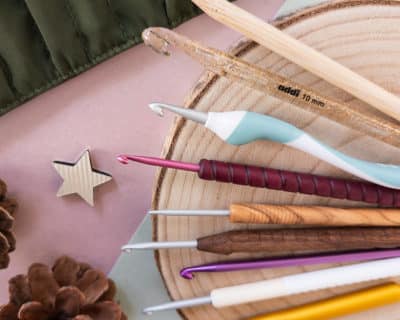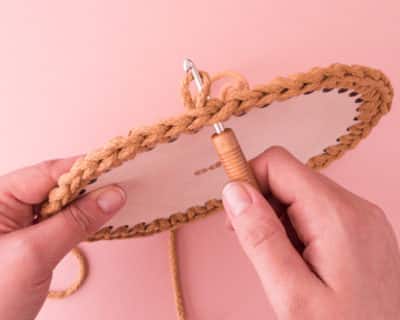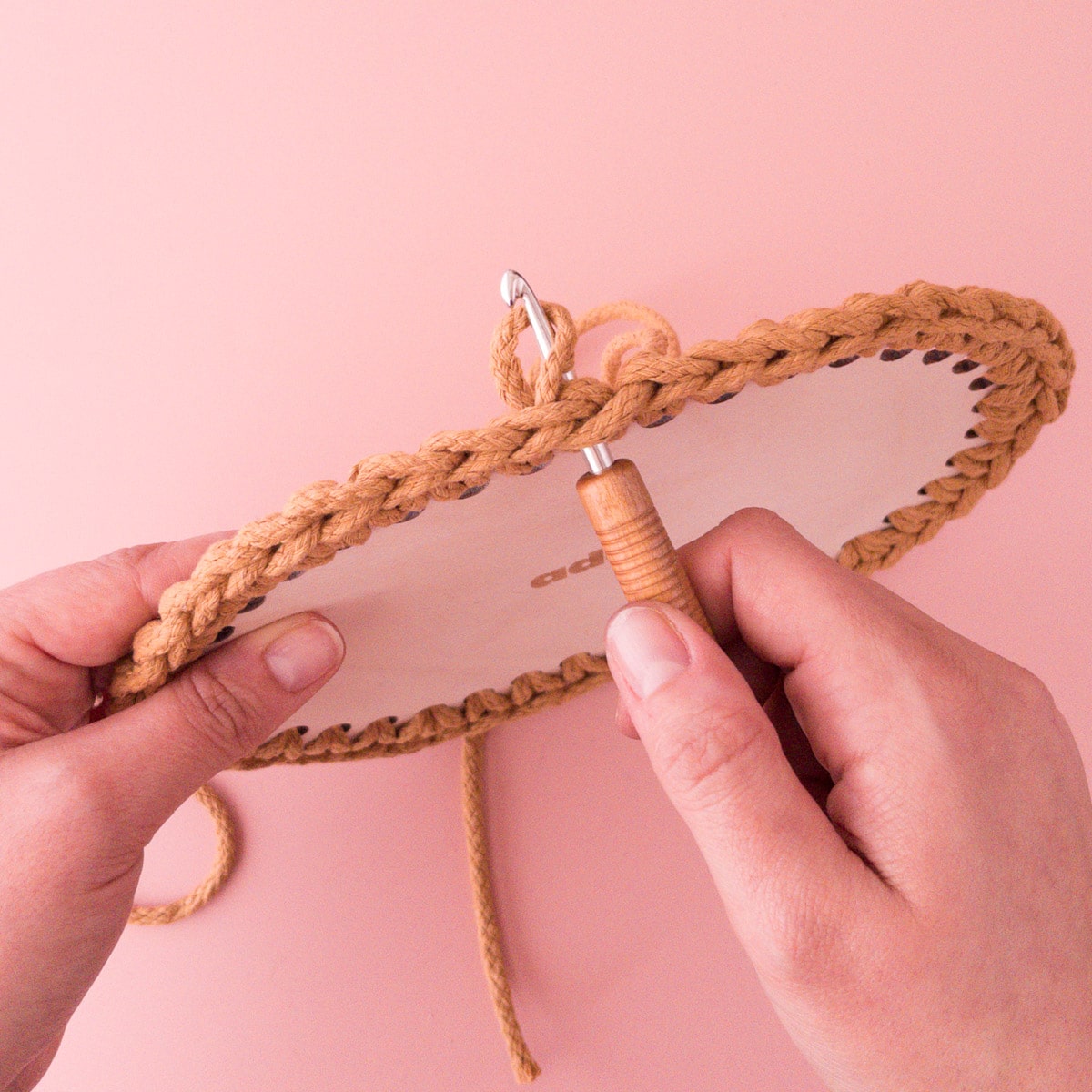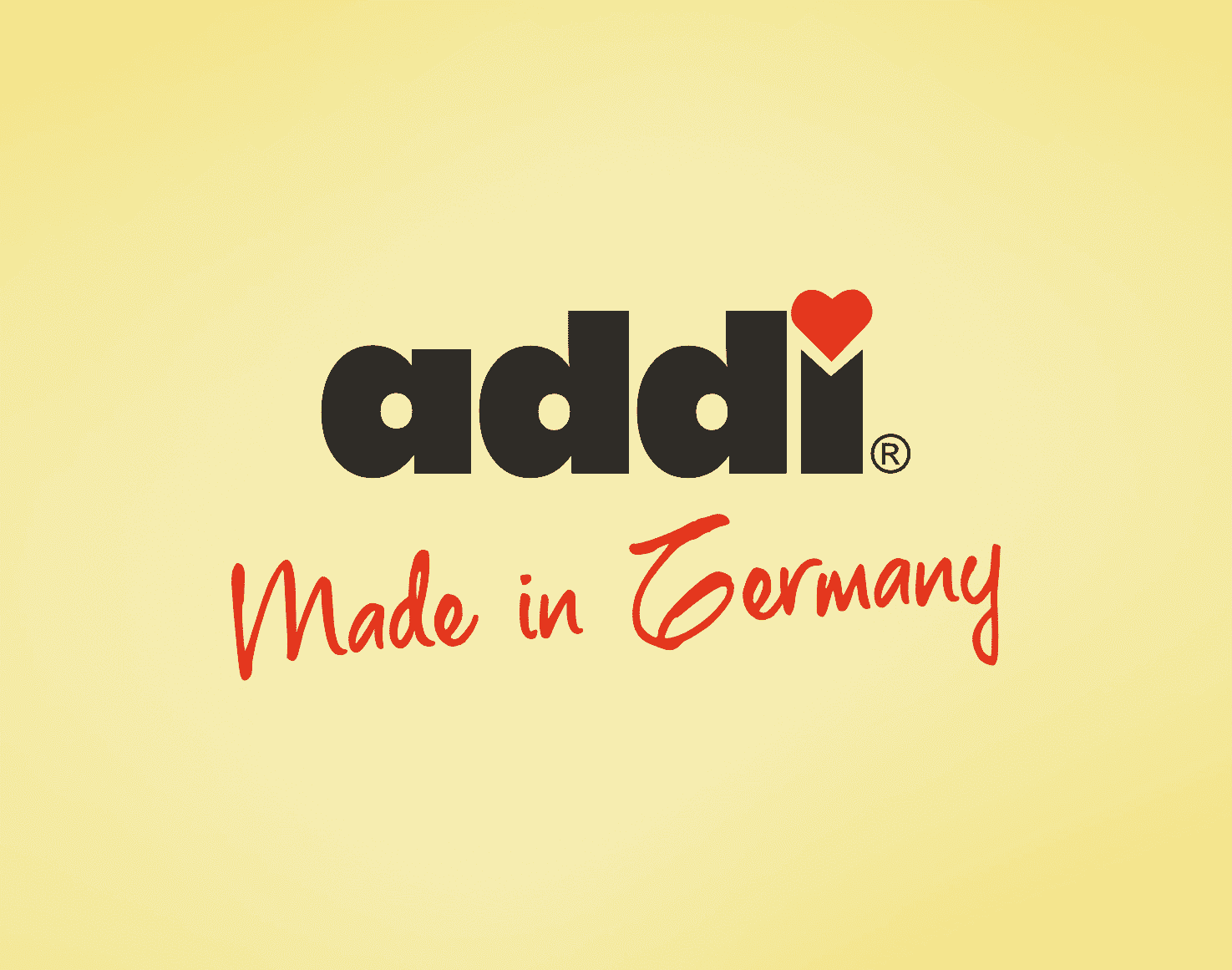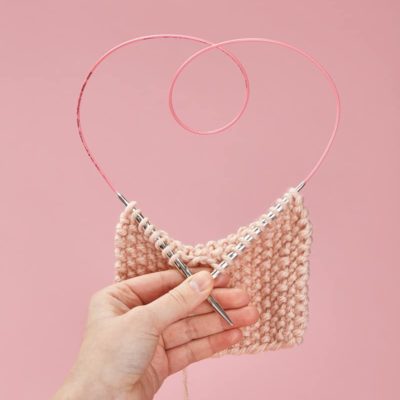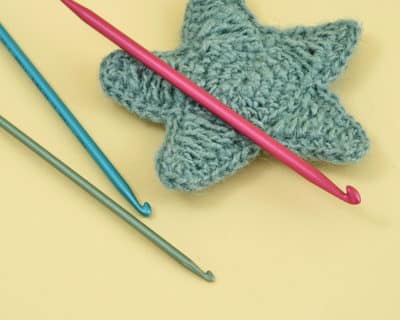Choosing the best crochet hooks for beginners: a guide
Welcome to the world of crochet! The wide range of different crochet hooks can be particularly confusing for beginners.
This guide offers comprehensive advice on finding the ideal crochet hooks for beginners for various needs and preferences.
Choosing a crochet hook to suit you is crucial to making this hobby fun in the long term!

Crochet hooks for beginners
For beginners, it is advisable to start by buying a crochet hook with different handles and trying out which one works best. This practical test helps you to identify your personal preferences and find the ideal needle.
Once you have decided on your preferred needle type, you can add a complete needle set to your wish list. A set like this offers different sizes, enabling you to complete a wide range of projects with optimal comfort and efficiency.
At the end of this article, we will tell you what distinguishes an addi needle from a cheap no-name product and why it is worth investing in quality needles.

Which needle size is suitable for which project
The needle size you choose depends on the project and the yarn you are using. Thinner needles (2.0 mm to 3.5 mm/ US A-E) are ideal for fine yarns and detailed work, while thicker needles (6.0 mm/ US J and up) are suitable for coarser yarns and quick projects. The recommended needle size is usually indicated on the yarn label.
Beginners should start with a crochet hook that is a good match for their first few projects and is neither too small nor too large.
There is no universally recommended starting strength, but we do recommend the following:
- For projects such as scarves, hats or clothing, a needle thickness of between approx. 4 and 6 mm (US G-J) is suitable. This size is suitable for many types of yarn and makes for comfortable working.
- For Amigurumi beginners: 2.5 mm (US C) (classic amigurumi) or bigger for thicker yarns
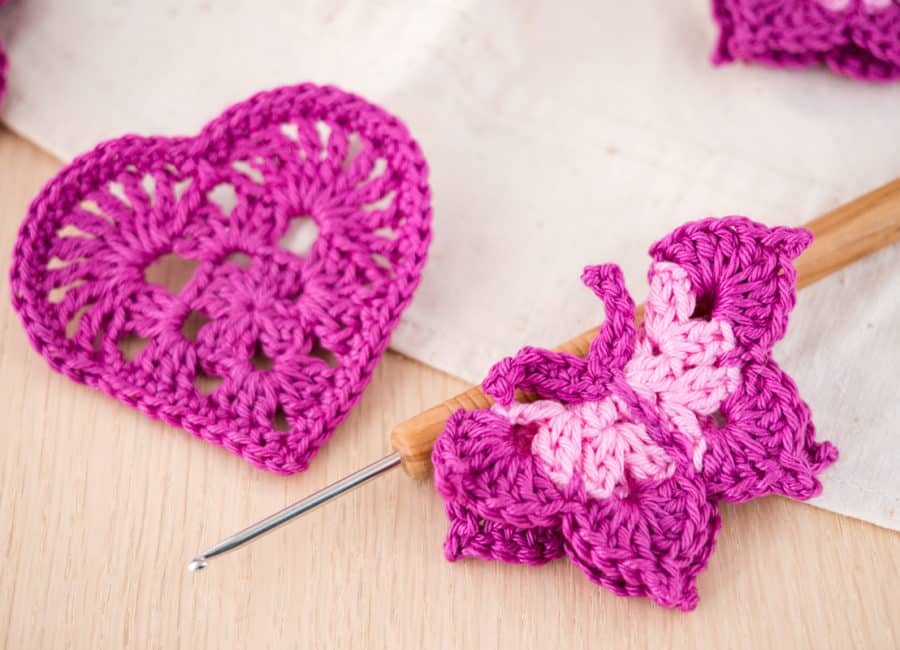
Which needle size is suitable for which project
The needle size you choose depends on the project and the yarn you are using. Thinner needles (2.0 mm to 3.5 mm/ US A-E) are ideal for fine yarns and detailed work, while thicker needles (6.0 mm/ US J and up) are suitable for coarser yarns and quick projects. The recommended needle size is usually indicated on the yarn label.
Beginners should start with a crochet hook that is a good match for their first few projects and is neither too small nor too large.
There is no universally recommended starting strength, but we do recommend the following:
- For projects such as scarves, hats or clothing, a needle thickness of between approx. 4 and 6 mm (US G-J) is suitable. This size is suitable for many types of yarn and makes for comfortable working.
- For Amigurumi beginners: 2.5 mm (US C) (classic amigurumi) or bigger for thicker yarns
Different hand positions when crocheting and the matching needles
There are two common crochet positions: the spoon/pen position and the knife position.
For the spoon grip, in which the needle is held like a pen, very balanced needles with smooth or evenly rounded handles are particularly suitable. They should not tip backwards in the pencil grip and the handle should be as light as possible.
For the knife grip, in which the needle handle is held like a knife with the entire palm of the hand, all handle shapes are suitable in principle, but especially those that are not too thin and fit well in the hand. Longer handles are recommended here to relieve the palm of the hand. They also prevent the end of the needle from uncomfortably pricking into the palm of the hand, which increases comfort when crocheting for longer periods.

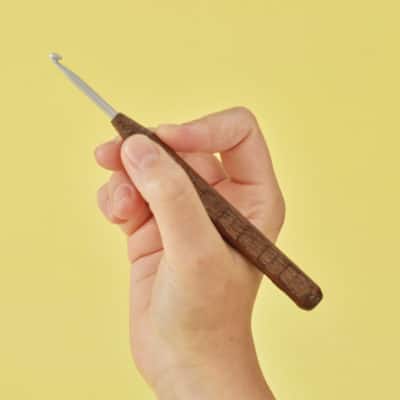
Different hand positions when crocheting and the matching needles
There are two common crochet positions: the spoon/pen position and the knife position.
For the spoon grip, in which the needle is held like a pen, very balanced needles with smooth or evenly rounded handles are particularly suitable. They should not tip backwards in the pencil grip and the handle should be as light as possible.
For the knife grip, in which the needle handle is held like a knife with the entire palm of the hand, all handle shapes are suitable in principle, but especially those that are not too thin and fit well in the hand. Longer handles are recommended here to relieve the palm of the hand. They also prevent the end of the needle from uncomfortably pricking into the palm of the hand, which increases comfort when crocheting for longer periods.

Different crochet hook materials
The choice of material is often a matter of personal preference. Wooden and bamboo needles offer a natural feel, while plastic is particularly light and inexpensive.
Most crochet hooks have a metal head combined with a plastic or wooden handle. Some crochet hooks don't even have a handle. Metal hooks slide through yarn much better than wooden crochet hook heads, for example.
The choice of material for the crochet hook can significantly affect the comfort of working. Here, everyone has to discover their preferred material.
Benefits of wood:
- Pleasant, warm feeling in the hands
- Sustainable material with a beautiful grain
- The natural, open-pored surface is grippy and good for hands that sweat.
- A patina develops over time – the wood can be regularly cared for and waxed.
Benefits of plastic:
- Cost-effective material with various surface properties
- Softer, non-slip plastic or more durable hard plastic
- Bunte Farben und vielfältige Griffformen

Different crochet hook materials
The choice of material is often a matter of personal preference. Wooden and bamboo needles offer a natural feel, while plastic is particularly light and inexpensive.
Most crochet hooks have a metal head combined with a plastic or wooden handle. Some crochet hooks don't even have a handle. Metal hooks slide through yarn much better than wooden crochet hook heads, for example.
The choice of material for the crochet hook can significantly affect the comfort of working. Here, everyone has to discover their preferred material.
Benefits of wood:
- Pleasant, warm feeling in the hands
- Sustainable material with a beautiful grain
- The natural, open-pored surface is grippy and good for hands that sweat.
- A patina develops over time – the wood can be regularly cared for and waxed.
Benefits of plastic:
- Cost-effective material with various surface properties
- Softer, non-slip plastic or more durable hard plastic
- Bunte Farben und vielfältige Griffformen
Solid or loose crochets
Whether your crochet is tight or loose depends on your technique and how you hold the hook.
Experienced crocheters benefit from smooth, easy-gliding hooks and should choose a size up rather than down. Smooth metal crochet hooks are best suited for this.
Während lockere Häkler eher eine kleinere Nadelstärke und Nadeln mit mehr Grip bevorzugen, um die Kontrolle über das Garn zu behalten. Holzhäkelnadeln können hier eine Alternative sein.
Sensitivity to heat or cold or sweaty hands?
For people with sweaty hands, plastic handles with silicone are ideal because they are non-slip. Grippy wooden surfaces also feel good in the hand and pick up moisture.
Those who are sensitive to heat or cold should opt for wooden or bamboo needles, as both materials feel very pleasant and lukewarm.
What makes a good crochet hook?
There are several features that characterise a high-quality crochet hook:
- Head: sharp enough to slide easily through the yarn but not so sharp that it splits the yarn.
- Throat: Deep enough to pick up the yarn securely.
- EdgesSmooth, to ensure even and smooth working.
- Weight: This is a lightweight model that is easy to hold without causing fatigue, but it is also sturdy.
- Longevity: High-quality materials and workmanship ensure a long service life.
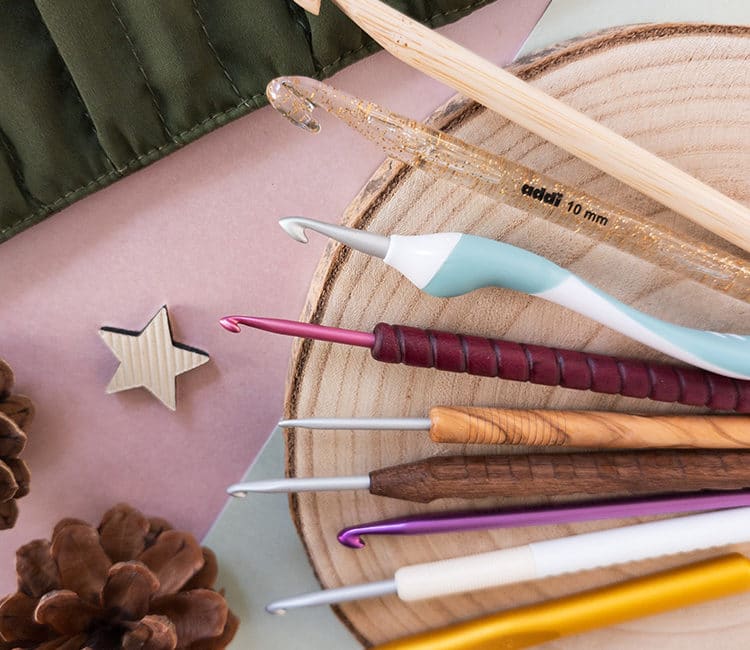
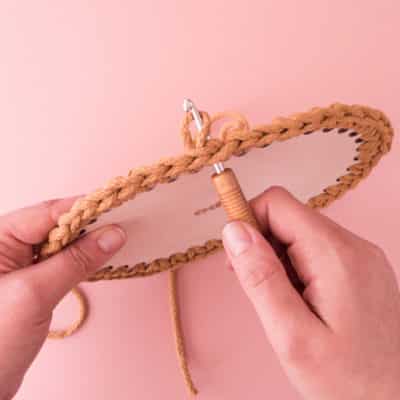
What makes a good crochet hook?
There are several features that characterise a high-quality crochet hook:
- Head: sharp enough to slide easily through the yarn but not so sharp that it splits the yarn.
- Throat: Deep enough to pick up the yarn securely.
- EdgesSmooth, to ensure even and smooth working.
- Weight: This is a lightweight model that is easy to hold without causing fatigue, but it is also sturdy.
- Longevity: High-quality materials and workmanship ensure a long service life.
Care of crochet hooks
The right care will significantly extend the life of crochet hooks.
Wooden and bamboo hooks
These needles can be treated regularly (about once a year) with a natural oil, such as olive oil or coconut oil. The oil keeps the wood supple, refreshes the colour and, in the long term, prevents cracks and drying out of the natural material.
Plastic and metal hook
These needles can be cleaned with a damp cloth and a little soap to remove hand cream or sweat from your fingers, for example.
Checklist for the perfect crochet hook
Choosing the right crochet hook is crucial for a pleasant and successful crocheting experience. By taking into account the material, thickness, hand position and personal preferences, the ideal needle can be found.
A good crochet hook combines comfort, durability and functionality to help you get the best out of every project.
- Try different needles (different handle shapes and materials)
- Crochet with a needle for a long time to test the ergonomics and the grip in your hand.
- Find out whether you prefer fine or thick yarn and which needle sizes you use most.
Once figured out, invest in the needle set that works best for your hands and your crochet technique.
High-quality needles last a very long time, thus saving you money, your hands and the environment.
Reasons for addi crochet hooks
We have been producing knitting needles and crochet hooks in Altena, Westphalia for almost 200 years. The family-run company is now in the hands of the 6th generation, and 93% of our range is manufactured in Germany. The origin of our products is fully traceable. Fair working conditions, including at our non-EU suppliers, are an integral part of our philosophy. Conditions are ultimately part of sustainable business, and we are all about sustainability.

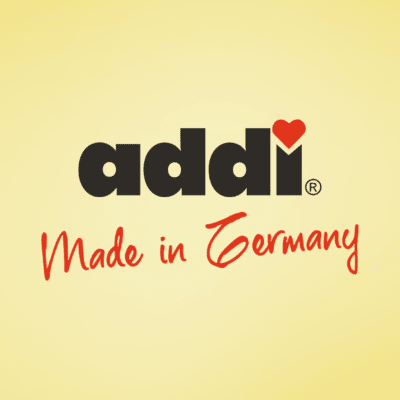
Reasons for addi crochet hooks
We have been producing knitting needles and crochet hooks in Altena, Westphalia for almost 200 years. The family-run company is now in the hands of the 6th generation, and 93% of our range is manufactured in Germany. The origin of our products is fully traceable. Fair working conditions, including at our non-EU suppliers, are an integral part of our philosophy. Conditions are ultimately part of sustainable business, and we are all about sustainability.
